 Chinese Fishing Nets/Vasco da Gama Square
Chinese Fishing Nets/Vasco da Gama Square
These huge cantilevered fishing nets are the legacy of one of the first visitors to the Malabar Coast. Erected here between 1350 and 1450 AD by traders from the court of Kublai Khan, these nets are set up on teak wood and bamboo poles. The best place to watch the nets being lowered into the sea and catch being brought in is the Vasco da Gama Square, a narrow promenade that runs along the beach. The Square is an ideal place to idle, with stalls serving fresh delicious seafood, tender coconut etc.
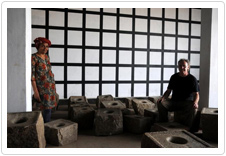 Kochi-Muziris Biennale
Kochi-Muziris Biennale
The Kochi-Muziris Biennale is an international exhibition of contemporary art held in Kochi, Kerala. It is the first Biennale being held in India. The exhibition was set in spaces across Kochi, Muziris and surrounding islands. The shows were held in existing galleries and halls, and site-specific installations in public spaces, heritage buildings and disused structures.
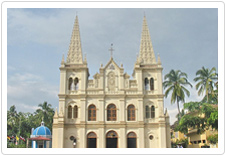 Santa Cruz Basilica
Santa Cruz Basilica
This historic church was built by the Portuguese and elevated to a Cathedral by Pope Paul IV in 1558. In 1795 it fell into the hands of the British when they took over Kochi, and was demolished. About a hundred years later Bishop Dom Gomez Ferreira commissioned a new building at the same site in 1887. The church was proclaimed a Basilica in 1984 by Pope John Paul II.
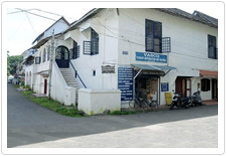 Vasco House
Vasco House
Believed to have been the residence of Vasco da Gama, this is one of the oldest Portuguese residences in Fort Kochi. Built in the early sixteenth century, Vasco House sports the typical European glass paned windows and balcony cum verandahs characteristic of the times.
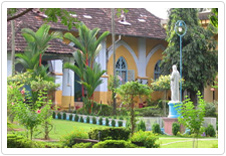 The Bishop's House
The Bishop's House
Built in 1506 as the residence of the Portuguese Governor, the Bishop's House stands on a little hillock near the Parade Ground. The facade of the House is characterised by large Gothic arches, and has a circular garden path winding up to the main entrance. The building was acquired by Dom Jos Gomes Ferreira, the 27th Bishop of the Diocese of Kochi whose jurisdiction extended over Burma, Malaya and Ceylon, in addition to India.
 The Dutch Cemetery
The Dutch Cemetery
The tomb stones here are the most authentic record of the hundreds of Europeans who left their homeland on a mission to expand their colonial empires and changed the course of history of this land. The cemetery was consecrated in 1724 and is today managed by the Church of South India.
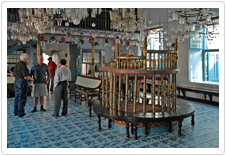 Jewish Synagogue
Jewish Synagogue
Jewish Synagogue : or the Paradesi Synagogue is the oldest synagogue in the Commonwealth of Nations, located in Kochi in South India. It was built in 1568 by the Malabar Yehudan people or Cochin Jewish community in the Kingdom of Cochin. It is also referred to as the Cochin Jewish Synagogue or the Mattancherry Synagogue. The synagogue is located in the quarter of Old Cochin known as Jew Town, and is the only one of the seven synagogues in the area still in use. The complex has four buildings. It was built adjacent to the Mattancherry Palace temple on the land gifted to the Malabari Yehuden community by the Raja of Kochi, RamaVarma. The Mattancherry Palace temple and the Mattancherry synagogue share a common wall.
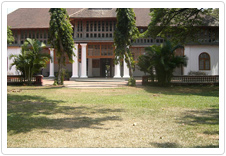 Bolgatty Palace
Bolgatty Palace
Built by the Dutch in India, it is located in the scenic island popularly known as Bolgatty island in Kochi. One of the oldest existing Dutch palaces outside Holland, this quaint mansion, built in 1744, by Dutch traders, was later extended and lush green gardens were landscaped around it. The building was then the Governor's palace for the Dutch and later in 1909 was leased to the British. It served as the home of the British Governors, the seat of the British Resident of Cochin during the British regime. In 1947, when India gained independence, the palace became the property of the state and later converted into a heritage hotel resort.
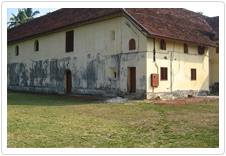 Mattancherry Palace
Mattancherry Palace
Mattancherry Palace, also known as the Dutch Palace, in Mattancherry, Kochi, features Kerala murals depicting Hindu temple art, portraits and exhibits of the Rajas of Kochi.Mattancherry Palace with its medieval charm is situated at Palace Road, Mattancherry, Kochi. It was built by the Portuguese and presented to Veera Kerala Varma (1537-65), Raja of Kochi, in 1555 AD.The palace is a quadrangular structure built in Nalukettu style, the traditional Kerala style of architecture, with a courtyard in the middle. In the courtyard there stands a small temple dedicated to 'Pazhayannur Bhagavati', the protective goddess of the Kochi royal family. There are two more temples on either side of the Palace, one dedicated to Lord Krishna and the other to Lord Siva. Certain elements of architecture, as for example the nature of its arches and the proportion of its chambers are indicative of European influence in basic Naluketttu style.